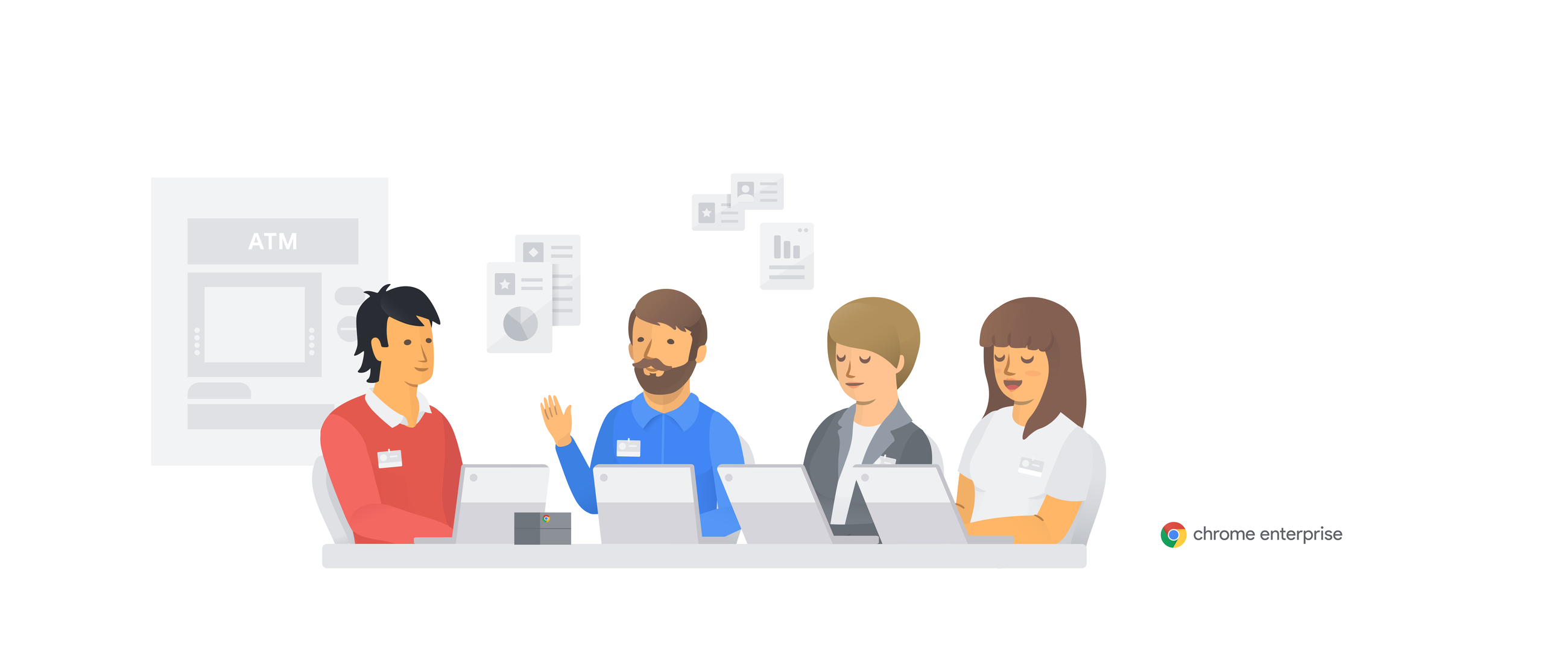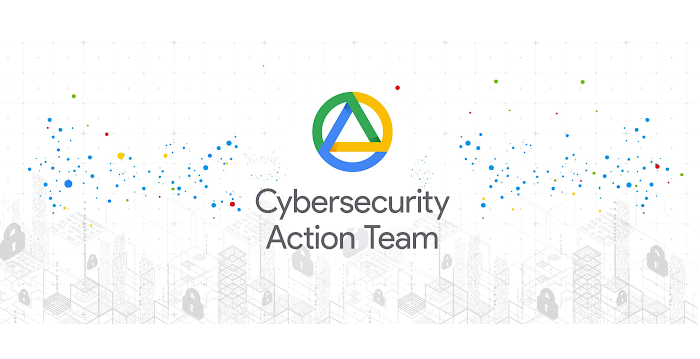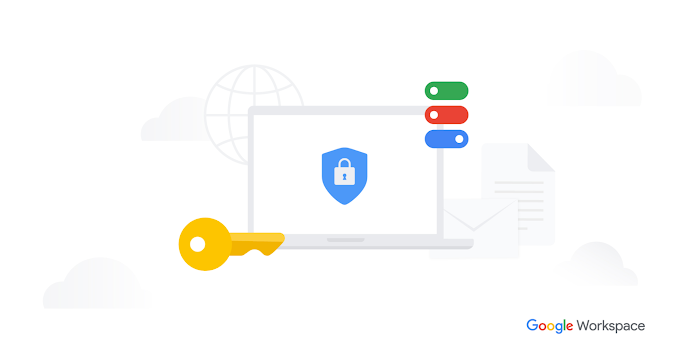How we adopted Pixelbooks and G Suite and changed ATB Financial’s work culture, step by step

Donna Chornawka
Managing Director of Team Member Collaboration and Enablement
Barry Hensch
Senior Vice President and Head of Technology Enablement, ATB Financial
Editor’s note: Today’s post is by Donna Chornawka, Managing Director of Team Member Collaboration and Enablement, and Barry Hensch, Senior Vice President and Head of Technology & Data Enablement for ATB Financial, the largest Alberta-built financial institution, headquartered in Edmonton, Alberta, Canada. ATB adopted G Suite and Pixelbooks to improve service to its 770,000 customers, and created a change management program to guide ATB team members on using the new tools.
We’re big on sharing ATB Financial’s 94-word story, which sums up our approach to banking and our customers: We think that banking can change people’s lives for the better, and we want to be relentlessly inventive. That’s why we’re open to radically changing how we work, bringing in new technology like G Suite and Pixelbooks when we think it can help team members focus on keeping customers happy.
However, we’re also realistic about what it takes to change our mindset around the tools we use at work. People can be resistant to change, so we wanted to guide them through the migration journey at every step—especially at a financial institution with over 5,500 team members in over 245 locations across Alberta. Here’s how we made the shift from a Windows and Microsoft Office organization to one that collaborates in the cloud with G Suite and Pixelbooks.
Step 1: Identify the best tools for the job. We used SoftWatch, a tool to assess application usage and identify which Office tools team members commonly used. With that data, we could suggest comparable G Suite tools to use instead.
Step 2: Create a team of evangelists to boost adoption. Knowing the switch to G Suite would require additional prepping to help everyone get to know and adopt the new tools, we formed a team of evangelists who could share stories about saving time and working efficiently with G Suite and our new Pixelbooks. Team members were invited to audition for the G Evangelist role, submitting videos that showed off their enthusiasm and problem-solving skills. We wanted people who weren’t afraid to show their vulnerability to change, since that was something we were all going through.
From 295 team member applications, we selected and built a group of 50 G Evangelists for our internal evangelist adoption team, being mindful of selecting people from across departments, job levels, locations, ages, and genders. We were big on leaving titles at the door—we wanted people at every level of the bank.
Onix, our implementation partner, ran “train the trainer” sessions for the G Evangelists so they’d be ready to coach others, covering topics like how to use the Chrome Browser’s offline feature and how to create Google Sheets.
Step 3: Go live with lots of support. When we went live with G Suite in mid-2017, our evangelists were ready, as well as 200 “G Whizzes”: Team members who had some previous experience with G Suite—whether in university, personally or another company. We also had 250 “G Guides” who provided “roaming support” across the organization. And our prep work paid off. The feedback about the transition to G Suite was that the switch was easy—largely thanks to all the help from the G Evangelists, Whizzes and Guides.
Step 4: Enlist early adopters to support new devices. With everyone on G Suite, we turned our attention to devices. Pixelbooks have the cool factor we think helps with adoption of new technology. That was important—since we’d just finished the switch to G Suite, we were sensitive about asking team members to make another big shift away from the technology they were comfortable with.
Again, we relied on early adopters to spread the word. This time, it was business unit leaders, since they could make the most of the Pixelbook’s benefits for mobility and travel, like long battery life, fast boot time and offline capabilities. And as a financial institution, the security features of the Chrome OS like disk encryption and clean boot were very important to us.
Once we had buy-in from leaders, they all wanted their teams to have Pixelbooks as well. And as people saw Pixelbooks in action, the most frequently asked questions was, “When can I get one?” We now have about 700 Pixelbooks for team members across all departments. Our short-term goal is to replace about half of our Windows laptops with Pixelbooks.
Creating a positive culture shift
When we worked on projects across offices in the past, we had to send documents, spreadsheets, and slides back and forth and wait hours or days for team members to contribute. If we traveled for work, we used slow, complicated VPNs. Now that we’re using G Suite and Pixelbooks, we’ve enabled collaboration first tools that work seamlessly together.
IT support costs for Pixelbooks are almost nonexistent. If there are issues, we simply reboot the devices or perform a factory reset, and the laptops are back up and running in minutes, helping to reduce downtime and keep people productive.
We spent a lot of time thinking about making application access as seamless as working in G Suite. We chose VMware Horizon for virtualization because it offered the best Chrome OS support. Now, any applications that can’t be accessed via the web, like our SAP portal, are available through VMware and Chrome Browser in a few clicks. We no longer need complicated VPNs to check email or work on documents when we’re away from the office. It’s a much better experience for team members, and it helps drive down our support costs, since workers don’t need us to troubleshoot VPN problems.
The best part of guiding team members through our G Suite adoption is that it’s helped ATB deliver an even better customer and team member experience. We answer customer questions quickly. We can work on the same document at the same time—even if some of us are in Calgary and some are in Edmonton. Team members can jump on a Hangouts Meet to problem-solve when there are service problems so we can spread the word to our customer-facing team members.
And now that we’re far along the culture-change journey, nobody wants to go back to the old days. We’ve successfully created the mindset that work is something you do, not somewhere you go.
Earlier this month, I was invited to share our adoption strategies at Google Cloud Next in San Francisco, along with two other Chrome Enterprise customers. If you missed it, you can watch the Chromebook Customer Adoption Journey panel session.




